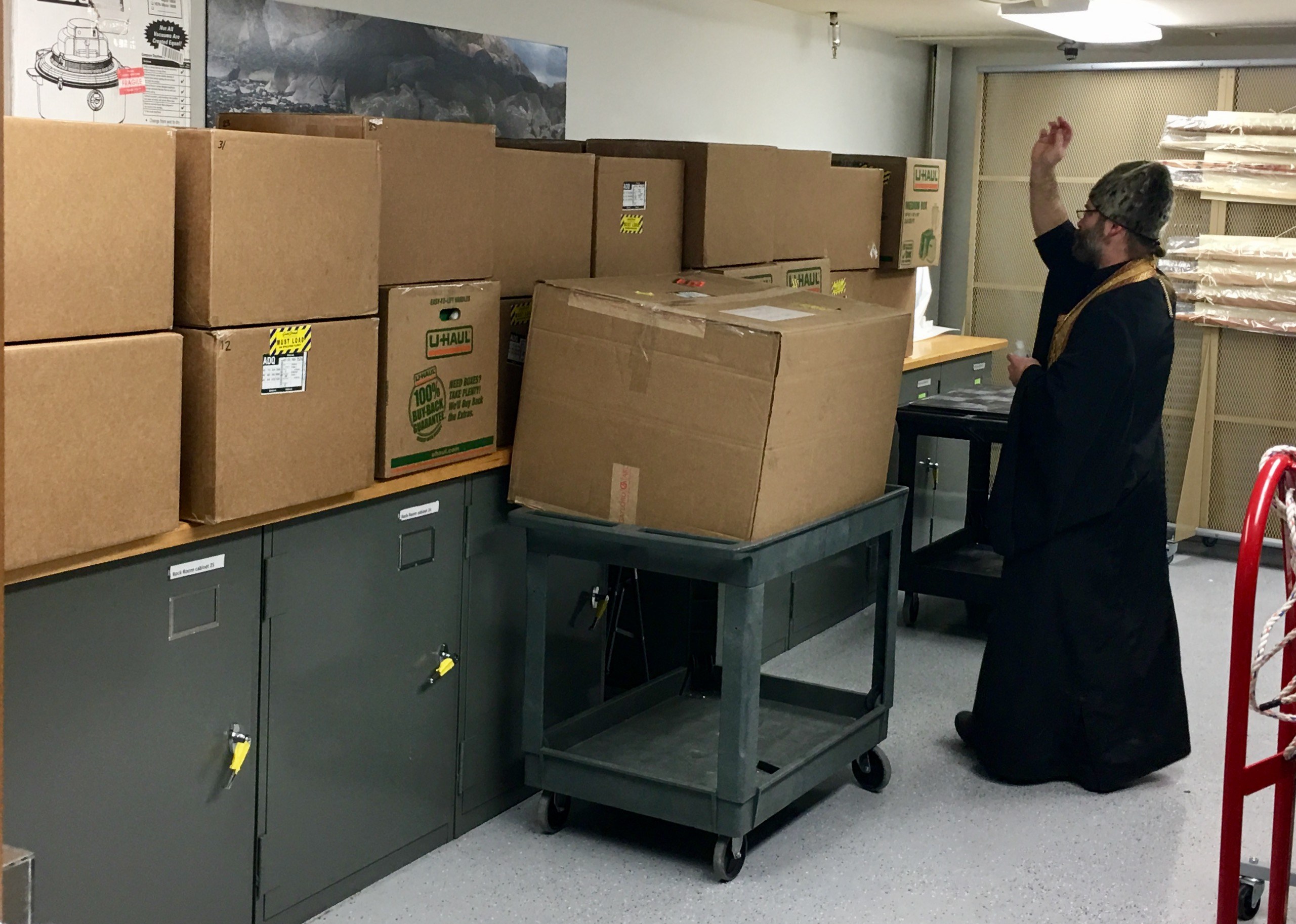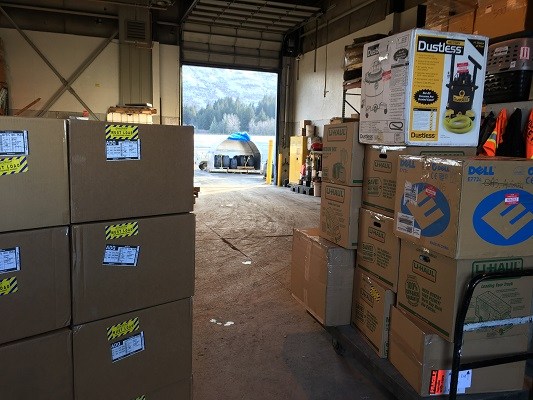
After years of work, ancestral remains from a 19th century settlement on Chirikof Island have returned home. In the 1960s, archaeologists removed the bones from Chirikof, which is located southwest of Kodiak Island, and since then the majority of the bones have been stored and studied at Indiana University Bloomington.
Representatives from the Alutiiq Museum and the U.S. Fish and Wildlife Service – the organization that manages the Chirikof land – have struggled long and hard to convince the university to release the remains. They finally found success through persistence and the legal backing of the Native American Graves Protection and Repatriation Act, or NAGPRA.
Now, almost a year since they won that battle, the remains have finally landed in Kodiak. KMXT’s Kayla Desroches rode with museum staff to the Benny Benson state airport to welcome the ancestors back home.
Outside, Alutiiq Museum staff is looking forward to another kind of reunion. They’re waiting for the arrival of the 51 boxes that contain the Chirikof ancestral remains.

Everyone’s a little nervous. In the hours before, Museum Executive Director April Laktonen Counceller admits she broke out in hives.
And at the moment, she’s trying to locate the remains.
She’s has been working to get the remains back to the island since she took the position in 2015, but the museum’s repatriation efforts began in the early 2000s.
At last, the boxes arrive and museum staff, baggage handlers, and volunteers from the U.S. Fish and Wildlife Service put the boxes into two vans.
After the boxes are all packed away, I check in with Counceller.
“As I was helping load the boxes in the van, I was just kind of thinking about what’s inside the boxes, so it’s emotional knowing that we’ve got humans in our hands right now as we’re loading ‘em and transporting ‘em to the museum,” Councellor said. “I mean, it’s really positive even though I’m emotional. It’s just very real now that we’re actually seeing the boxes and moving forward.”
Councellor said the Alutiiq Museum has planned a Russian Orthodox ceremony for the Chirikof ancestors, who were Christian.
“We felt that it would be the most honorable thing to do to have a Russian Orthodox priest bless the remains when they arrive to sort of signify that they are back in their homeland, they’re in their home region,” Councellor said. “Although we’re not on Chirikof Island, this is part of the same parish and so the descendants of the Chirikof people are mostly living here on Kodiak today.”

Some of those descendants gather for the service in the lower level of the museum. Staff has set up coffee and cookies in a small room, and people talk quietly while they wait for attendees to arrive.
Elder Nick Alokli is one of those whose surname can be found among the records of the Chirikof ancestors.
“[I’m] really excited,” Alokli said. “I’m just happy they’re finally coming home. Their real home is up in paradise, but their temporary home was Kodiak Island, so I’m glad they’re here now. It’s really surprised me because I never thought this would ever happen.”
Chirikof descendent Frank Peterson has worked for both the Sun’aq Tribe and the Alutiiq Museum, and is now the chair of Sun’aq tribal council. He said he first heard about NAGPRA when he was working as director of operations for the museum, and it’s surreal to see the remains finally back in Kodiak.
“It’s amazing,” Peterson said. “Even before I knew that I was related to anybody, it was still an awesome responsibility for me. It’s something that I’ve taken to heart since learning about this process and that there are remains that are unclaimed, so it’s very, very important for me.”
When everyone’s ready, they file into the hall and stand outside the room where the remains are now being kept. Father Innocent Dresdow sings a prayer as part of the memorial service, or panakita.
It’s a somber event. When the ceremony ends, the environment relaxes, and the attendees – around 15 people – turn to each other.
Descendent Susan Malutin said the service was meaningful and long overdue.
“We can just relish in the fact that they’re here now, and that’s the important thing, and it’s not just this group here, but others who have the relatives, they too can find comfort in that now,” Malutin said. “They too. And that’s important.”
The repatriation process isn’t over yet.
Counceller explains the U.S. Fish and Wildlife Service still needs to publish the official notice in the federal register. That will allow the Sun’aq Tribe to make an official claim on the remains, fill out the paperwork, and complete the repatriation. They will then re-inter the remains.
Kayla Deroches is a reporter at KMXT in Kodiak.




